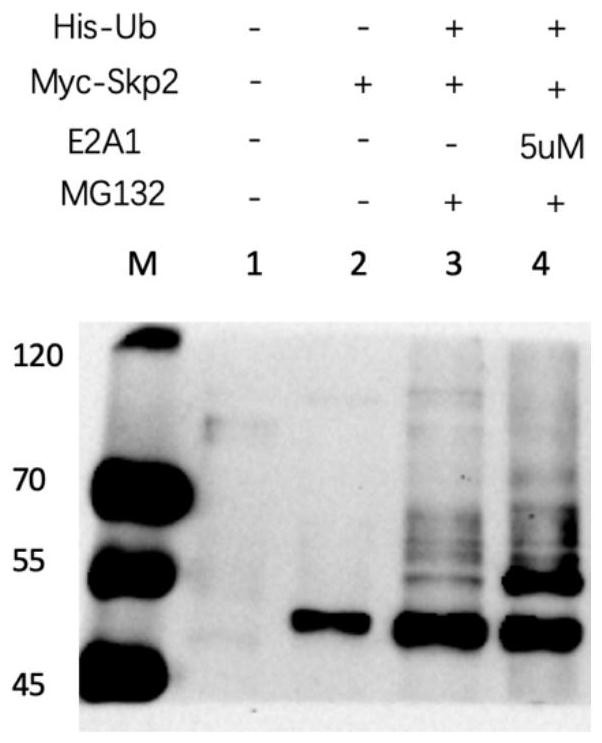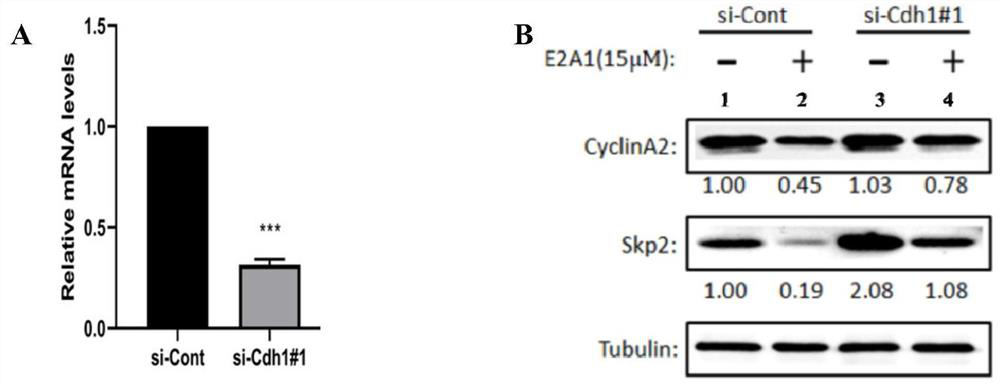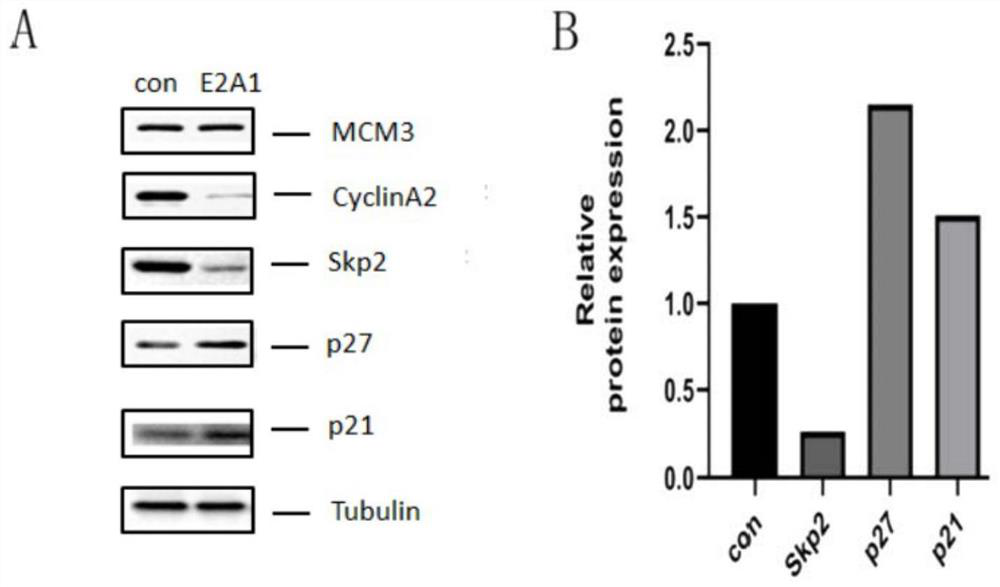The beauveria bassiana analogue is applied as micromolecular agonist of APC/C
A technology of beauveria and its analogues, applied in the field of molecular biology, can solve problems such as limiting APC/C research, achieve important scientific research value and application prospects, be easy to amplify and cultivate, and be easier to separate and purify
- Summary
- Abstract
- Description
- Claims
- Application Information
AI Technical Summary
Problems solved by technology
Method used
Image
Examples
Embodiment 1
[0045] Example 1: Beauvericin (E2A1) promotes the ubiquitination modification of APC / C-mediated target proteins Skp2 and CyclinA2
[0046] Skp2 and Cyclin A2 are the definite downstream target proteins of APC / C, so Skp2 and Cyclin A2 can be used to verify whether beauvericin (hereinafter referred to as E2A1) has an effect on APC / C. Therefore, this example first verified whether the compound E2A1 mediated the degradation of Skp2 protein through the ubiquitinated proteasome pathway.
[0047] In this example, the ubiquitination model was constructed in the HEK293T cell model, which was divided into 4 experimental groups, which were (1) blank control group (2) negative control group (3) positive control group (4) experimental group, each group cells according to figure 1 After adding the corresponding transfection plasmids or compounds as shown, the protein was collected and extracted according to the protein collection method of Western Blotting, and the ubiquitinated protein of...
Embodiment 2
[0073] Example 2: The ubiquitination modification of APC / C promoted by compound E2A1 to its substrate causes the stability reduction and further degradation of its target protein Skp2
[0074] In this embodiment, 10 μM E2A1 and DU145 were co-cultured for 24 hours to determine the expression levels of cell cycle-related proteins.
[0075] The specific experimental process is as follows:
[0076] 1. DU145 cells were treated with compounds after 24 hours of culture;
[0077] 2. Dilute the Cycloheximide (CHX) stock solution with complete medium to a final concentration of 35 μM for later use;
[0078] 3. Take out the cells to be treated, gently suck out the original old medium along the wall of the well, then gently add 2mL of the complete medium of 35μM cycloheximide mixed above into the well along the wall, and culture for 0, 3, 6. Collect the cells after 12 hours, lyse the cells and collect the proteins, and verify that E2A1 affects the degradation of p27 and Skp2 proteins by...
Embodiment 3
[0087] Example 3: The ubiquitination and degradation of Skp2 protein promoted by compound E2A1 can further inhibit the DNA replication and synthesis of prostate cancer cell line DU145
[0088] The cell proliferation marker BrdU is a derivative of thymine, which is often used to mark newly synthesized DNA (S phase of the cell cycle). This mark can exist stably and enter daughter cells with DNA replication, so it can be used for detection and judgment DNA synthesis capacity of cells. In order to determine whether compound E2A1 can affect the DNA synthesis ability of DU145 cells, a BrdU labeling experiment was designed in this example to verify the effect of compound E2A1 on the DNA synthesis ability of DU145 cells.
[0089] The specific experimental procedure of immunofluorescence is as follows:
[0090] 1. In a 12-well cell culture plate, put the cleaned cell slides and 5×10 per well 5 1 DU145 cells were co-cultured for 12 hours;
[0091] 2. After 12 hours, aspirate and disc...
PUM
 Login to View More
Login to View More Abstract
Description
Claims
Application Information
 Login to View More
Login to View More - R&D
- Intellectual Property
- Life Sciences
- Materials
- Tech Scout
- Unparalleled Data Quality
- Higher Quality Content
- 60% Fewer Hallucinations
Browse by: Latest US Patents, China's latest patents, Technical Efficacy Thesaurus, Application Domain, Technology Topic, Popular Technical Reports.
© 2025 PatSnap. All rights reserved.Legal|Privacy policy|Modern Slavery Act Transparency Statement|Sitemap|About US| Contact US: help@patsnap.com



